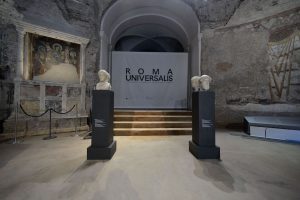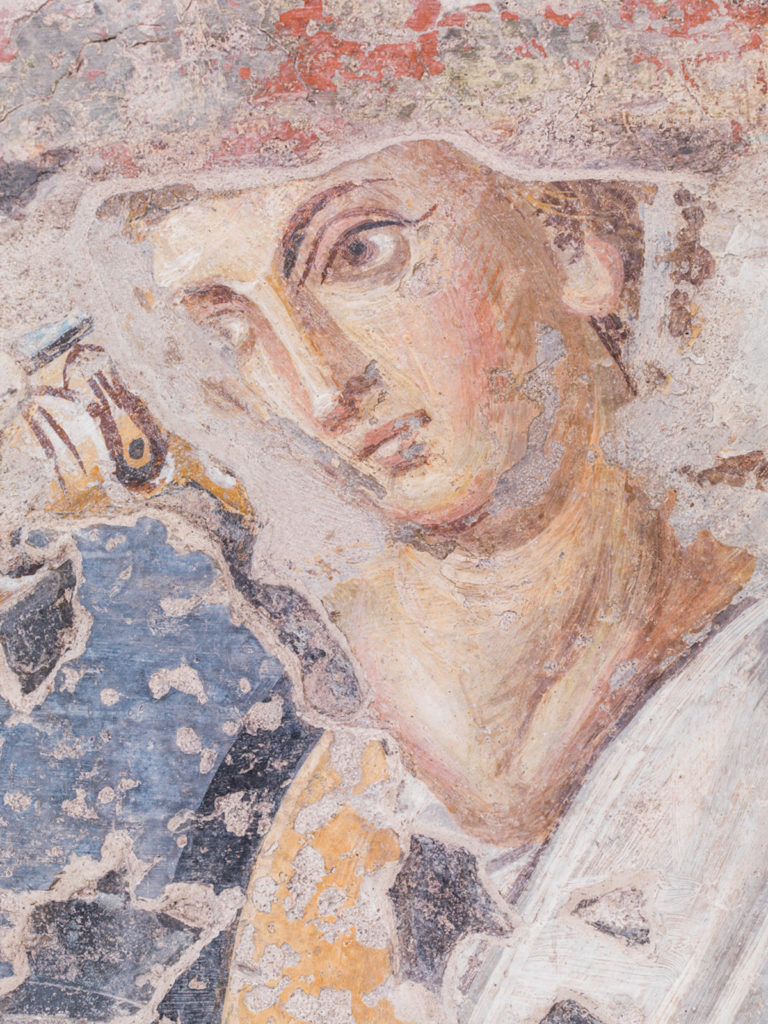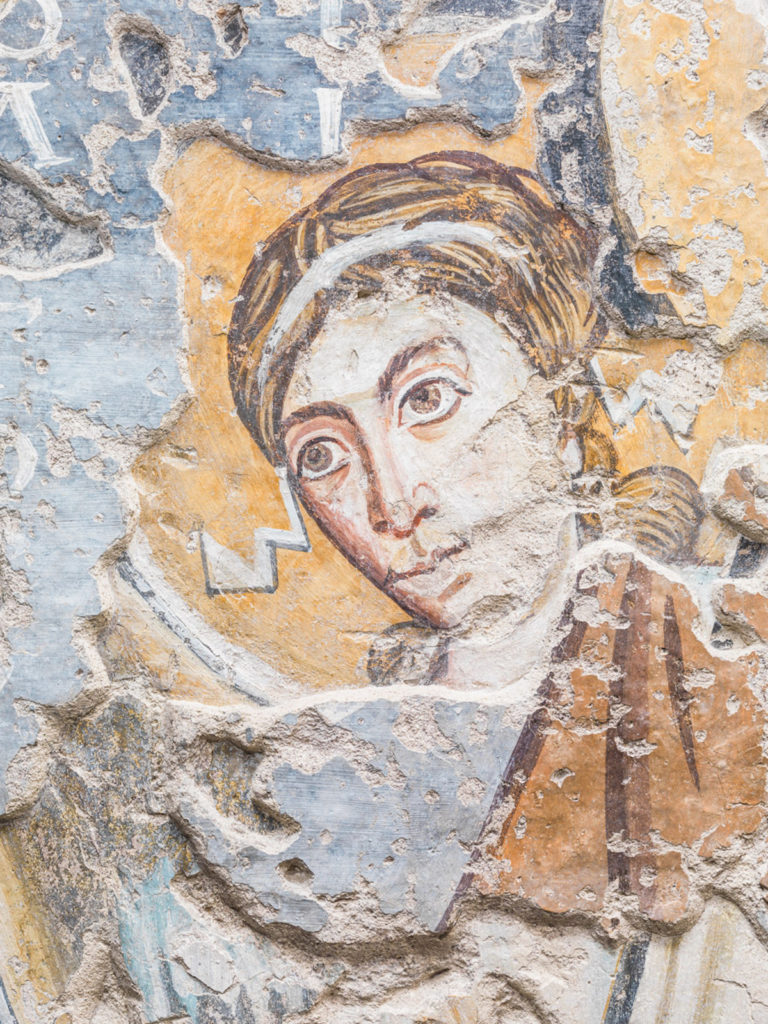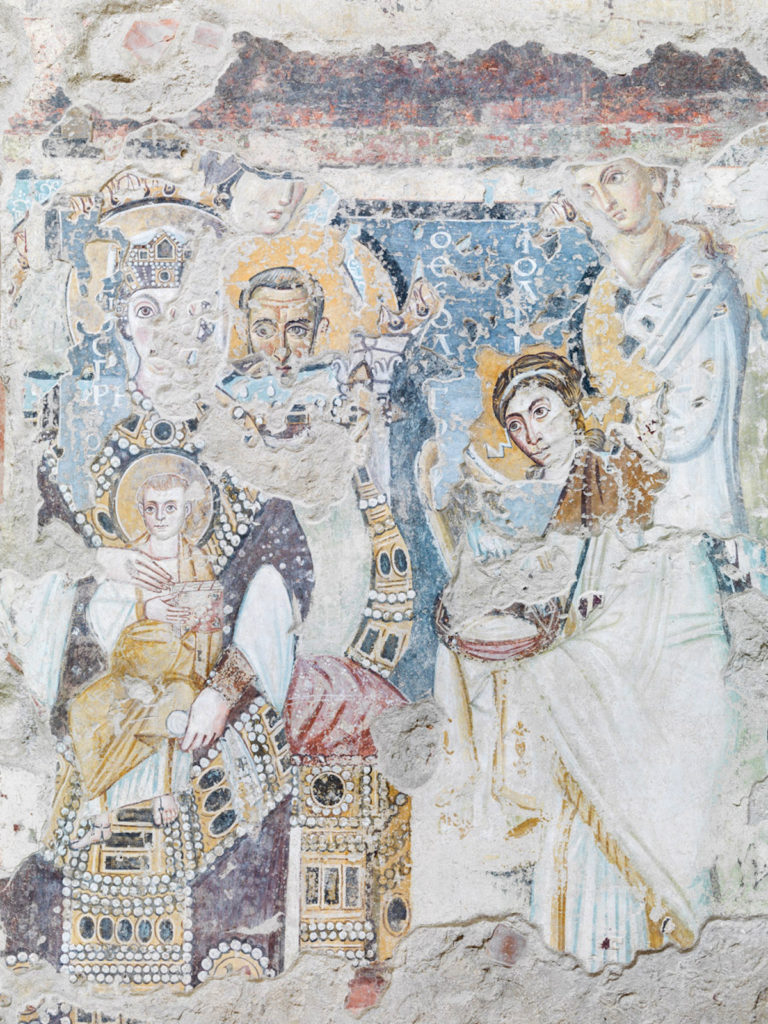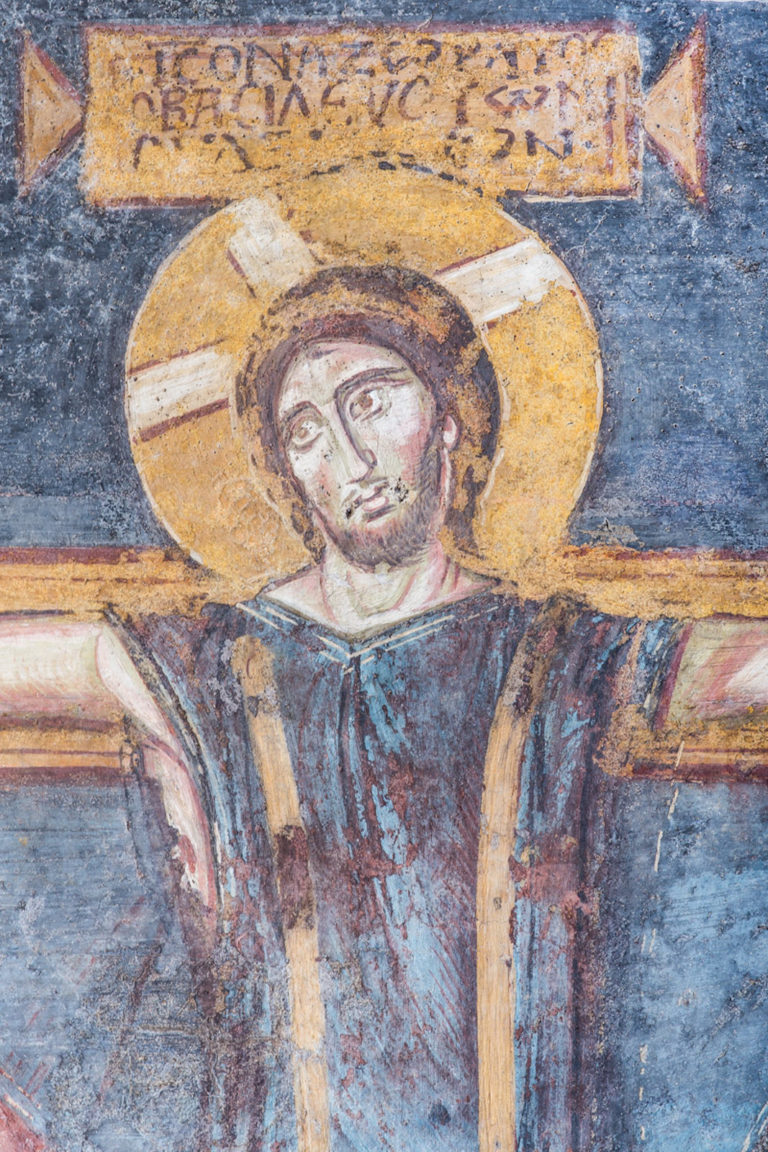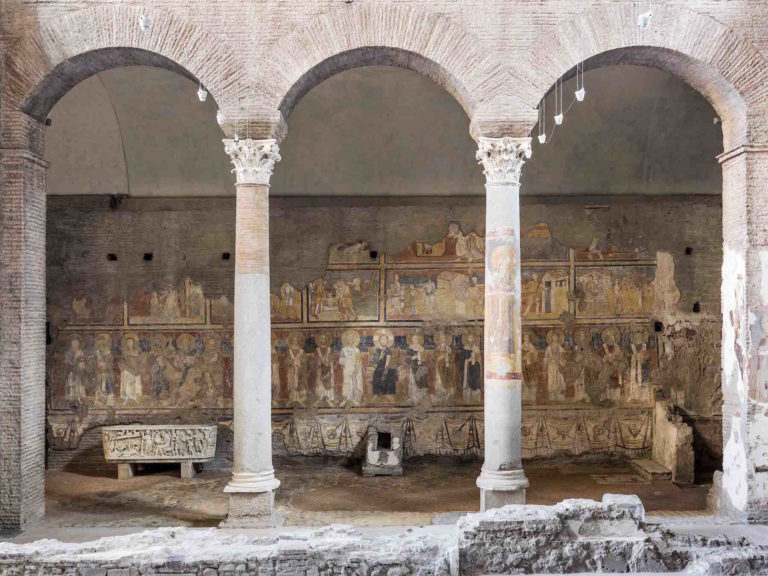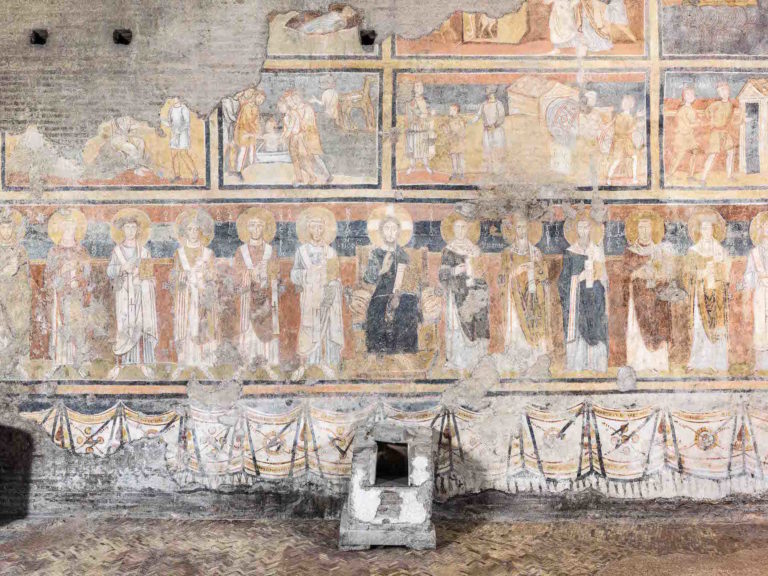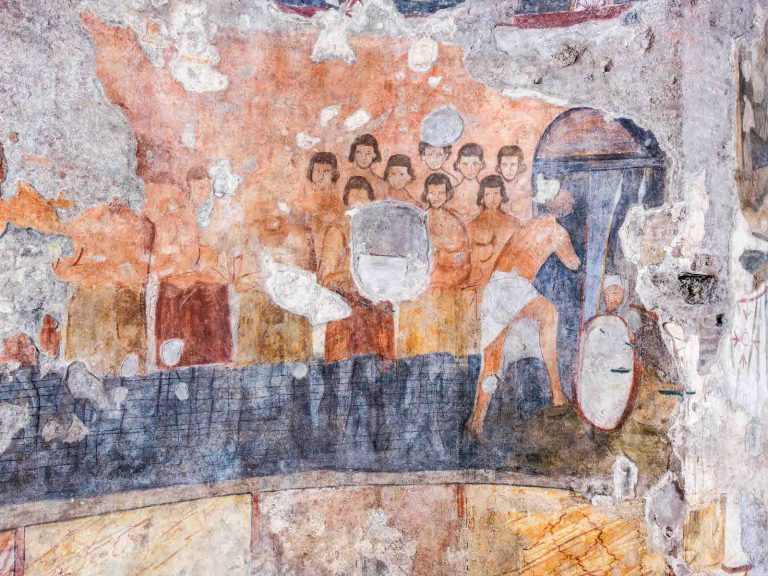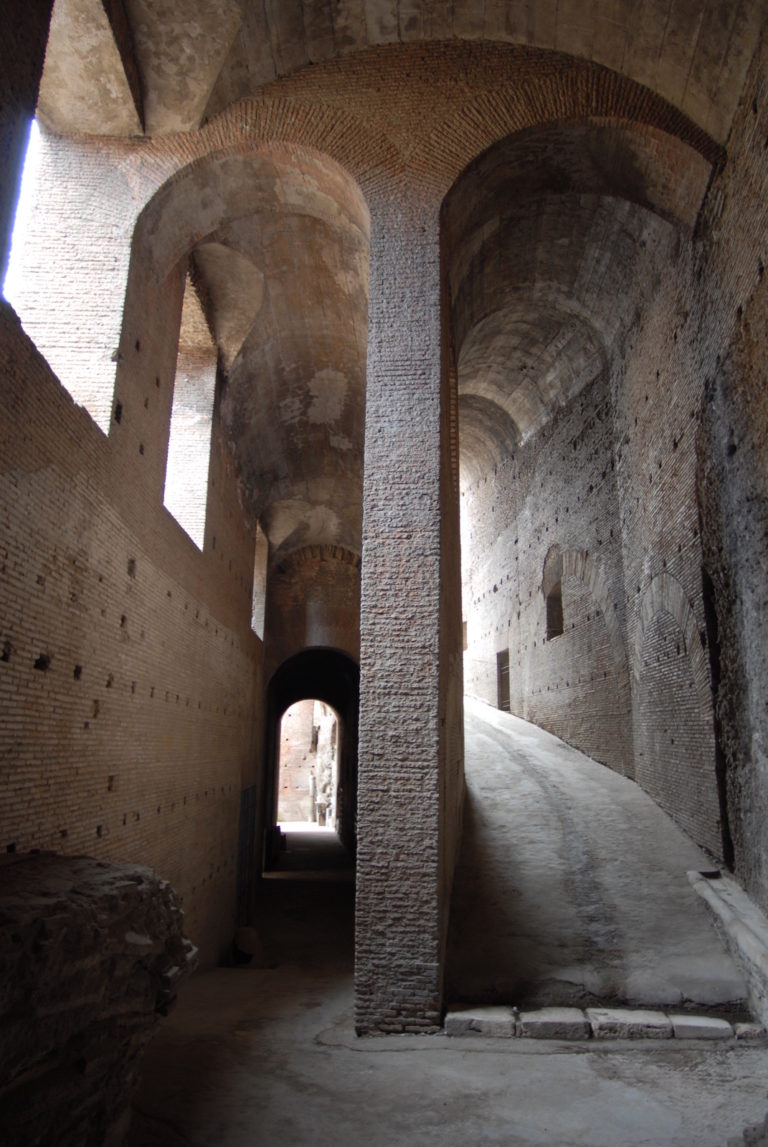Santa Maria Antiqua with the Oratory of the Forty Martyrs and the Ramp of Domitian
The church of Santa Maria Antiqua, discovered in 1900 on the slopes of the Palatine, preserves on its walls a wealth of paintings, dating from the 6th to 9th centuries, when it was abandoned after its collapse in an earthquake in 847. It went through several decorative phases, as shown by the wall, where they are layered to form a “palimpsest”. On this large fragment, six layers of painting can be identified, ranging between the 4th-5th centuries and the 8th century CE.
Particularly well preserved is the cycle of the martyrdom of St. Cyricus and St. Julitta, which almost entirely covers the chapel of Theodotus, dating from the papacy of Pope Zacharias (741–752). The chapel on the right of the presbytery is dedicated to the Medici Saints. In the left aisle there is a row of saints of the Greek and Latin Church, with Christ at the centre, surmounted by stories from the Old Testament.
The Oratory of the Forty Martyrs takes its name from a painting, datable to the 8th century, that adorns the apse. It extols the devotion of the Christian soldiers condemned to die in the frozen waters of a lake at Sebaste in Armenia, during the persecution of Diocletian. The interior is quadrangular. On the right-hand wall it also has a fresco of St. Anthony the Hermit, while the floor preserves fragments of marble paving from the Middle Ages. Originally this space was probably the entrance hall to the Ramp of Domitian, which led to the Imperial Palaces on the Palatine. With the Christianisation of the Forum the building became an oratory.
Admission with Forum Pass SUPER and Full Experience tickets



